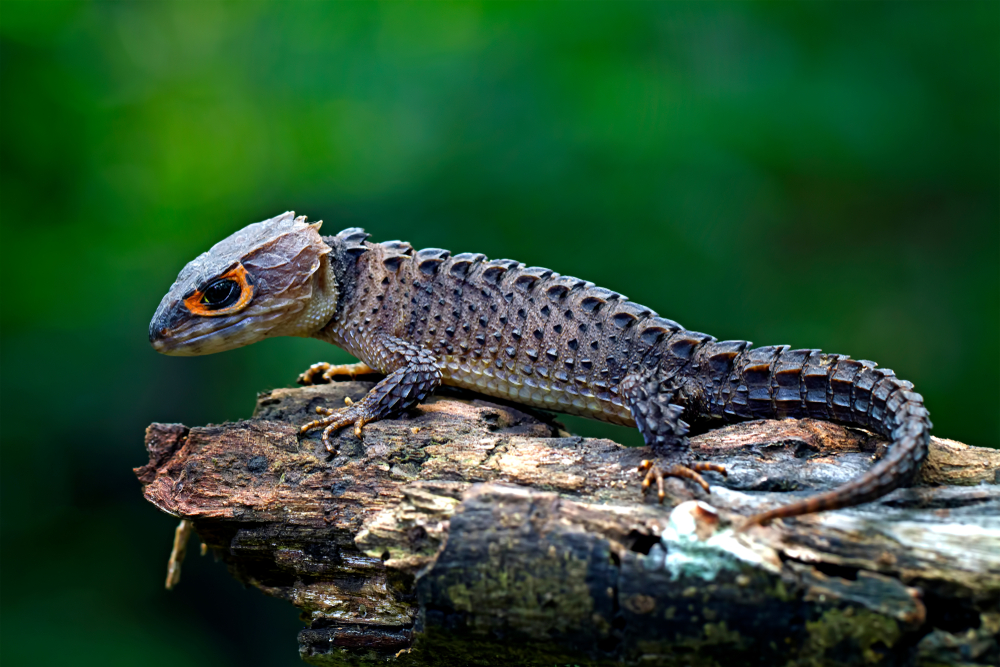The crocodile skink genus (Tribolonotus) have recently been demonstrated to biofluoresce, representing the first documented case within the Scincidae family.
Research by the Royal Belgian Institute of Natural Sciences has found that under UV exposure three species of crocodile skink- Tribolonotus gracilis, Tribolonotus novaeguineae and Tribolonotus brongersmai fluoresced green. The biofluorescence was localised to the head, eyes, throat, ventrical region and lateral and dorsal scale tips. Excluding the eyes, all fluoresce was attributed to osteoderms, suggesting other lizards with similar structures may also fluoresce.

Why Does the Crocodile Skink Fluoresce?
Skinks often display complex social behaviours. Crocodile Skinks have been found to form small family groups with their offspring. These are either as a pair or a single male with two or more females. Being highly social lizards, it has been hypothesised that this biofluorescence could be involved in communication. During mating male will inflate their throats to females. The heads and throats of males displayed some of the highest biofluorescence. It was also suggested that Tribolonotus brongersami displayed slight sexual dimorphism, which could aid in sex recognition.
Crocodile skinks, along with all skinks e.g. Blue-tongued skinks, possess the necessary cones to see UV during their active time around dusk and dawn. Providing UV to crepuscular animals is likely to be more important than previously thought and replicating the sun in its fullest should be a keepers goal.
Crocodile skinks are not the only hobby species to biofluoresce. Many amphibians including the Cranwell’s horned frog (Ceratophrys cranwelli), the Amazon milk frog (Trachycephalus resinifictrix) and Tiger salamander (Ambystoma tigrinum) are capable of fluorescing. How each species utilises biofluoresce is unknown. Ensuring your pet amphibian has access to UV will improve its health and welfare but also potentially intra-species communication and breeding.
The full journal article can be found here.
By Adam Colyer and Sanya Aggarwal
If you liked this story, click here to read about how one gecko has developed shedding ‘fish-like’ scales to avoid predation.
